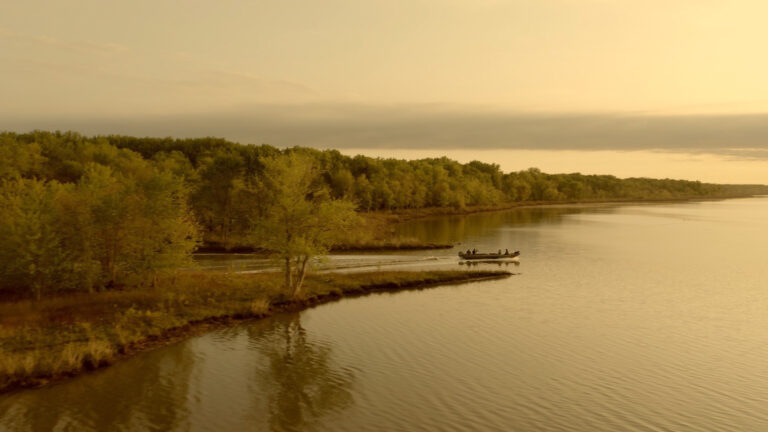ROCKFORD — Copi is the new name for an old problem in Illinois waterways. Now chefs around the state are taking a stab at making the fish formerly known as “Asian Carp” taste good.
Listen to this story here.
Dining on Copi
Dom Romano is heating up the grill at The Norwegian, a west side Rockford restaurant and one of 14 restaurants statewide working with the Department of Natural Resources to make the invasive carp a staple good.
“So we’ve got a Copi cake here. Crab cake style preparation.”

Copi is the new name for the Asian carp, the family of four invasive carp species—Bighead Carp, Black Carp, Grass Carp and Silver Carp—that now make up nearly 70% of the biomass of the Illinois River. Asian carp, in some cases weighing up to 100 pounds, can consume nearly half its body weight daily, and outcompetes native fish in their own waterways.
Kevin Irons with the IDNR’s solution? Eat them.
“It is clear that although we cannot likely eradicate these species, harvest can prevent the spread and is one of the strongest tools we have to reduce populations of Asian carp in areas where they are dominated,” said Irons. ”Harvests can significantly lower densities and populations of these carp in the Illinois River.”
That’s where the rebranding comes into play. The plan is to develop a consumer-friendly image and ensuing market demand for the invasive carp. Dom Romano from The Norwegian adds that the real challenge is helping the carp shed its bad reputation as bottom feeder.
“But the Asian carp is a top feeding filter feeder. So like she said, it’s a much cleaner fish. You know, there’s very little fat. There are healthy omega-3s in there. They’re surprisingly, very lean.”
This is the Illinois River, where I am simply having a ball, stealing all the food from native fish and birds. pic.twitter.com/6XXWVmqjtp
— Copi Fish (@ChooseCopi) June 27, 2022
Incorporating invasive species into local cuisine isn’t a particularly new practice. The gulf states have been experimenting with dished using Lionfish and Nutria for years. A distillery in the northeast has even been the invasive green crab to flavor their whiskey.
Dominating the Illinois River
The invasive carp were imported to the American south in the 1970s to help manage algae and weed growth in local water sources. But by the 1990s, the carp escaped into the Mississippi River and spread throughout its tributaries like wildfire, including the Illinois River.

And for Robert Hirschfeld, a water policy specialist with the Prairie River Network, the recent marketing blitz around the invasive carp or Copi, is just an extension of the state’s history of managing the river for the benefit of a couple of different private industries and potentially incentivizing new ones.
“Is that industry going to stay here for the long term, suddenly, there will be all kinds of stakeholders that are that, that need carp to survive in the river,” said Hirschfeld. “So is the DNR’s long term vision for the Illinois, one of hosting a sustainable commercial fishery and invasive species?”
The looming threat of the carp reaching the Great Lakes and decimating native fisheries along with the multi-billion-dollar industry wrapped up in recreational boating and fishing, has spurred state and federal agencies to spend hundreds of millions of dollars on deterrent technology, like acoustic blasts, bubble curtains and electric barriers, in order to prevent the carp from traveling any further up the Illinois River and into the Lake Michigan.
But for Hirschfeld it’s unclear who’s protecting the river itself. “And, you know, 100 years from now, are we just selling Copi? Or are we rethinking the river to be a thriving community of life, for humans and other species as well?”
Hirschfeld adds that he’s not opposed to harvesting carp, he just wants to understand the state’s vision for the Illinois River.
In Rockford, Emily Hurd, the owner of the Norwegian restaurant, says the team is gearing up for its three day run of their Copi cake recipe.
“And the people we’ve been feeding it to in the restaurant with so far said it’s pretty good,” said Hurd. ”We’ll be really giving it its big, big trial for our night service. We do a pretty big night service now. And it’s on the menu. So fingers crossed”
Hurd says that if the Copi cakes don’t land, the restaurant won’t give up on the Copi. They like a challenge.
Juanpablo Ramirez-Franco is a current corps member for Report for America, an initiative of the GroundTruth Project. It’s a national service program that places talented journalists in local newsrooms like WNIJ. You can learn more about Report for America at wnij.org.

